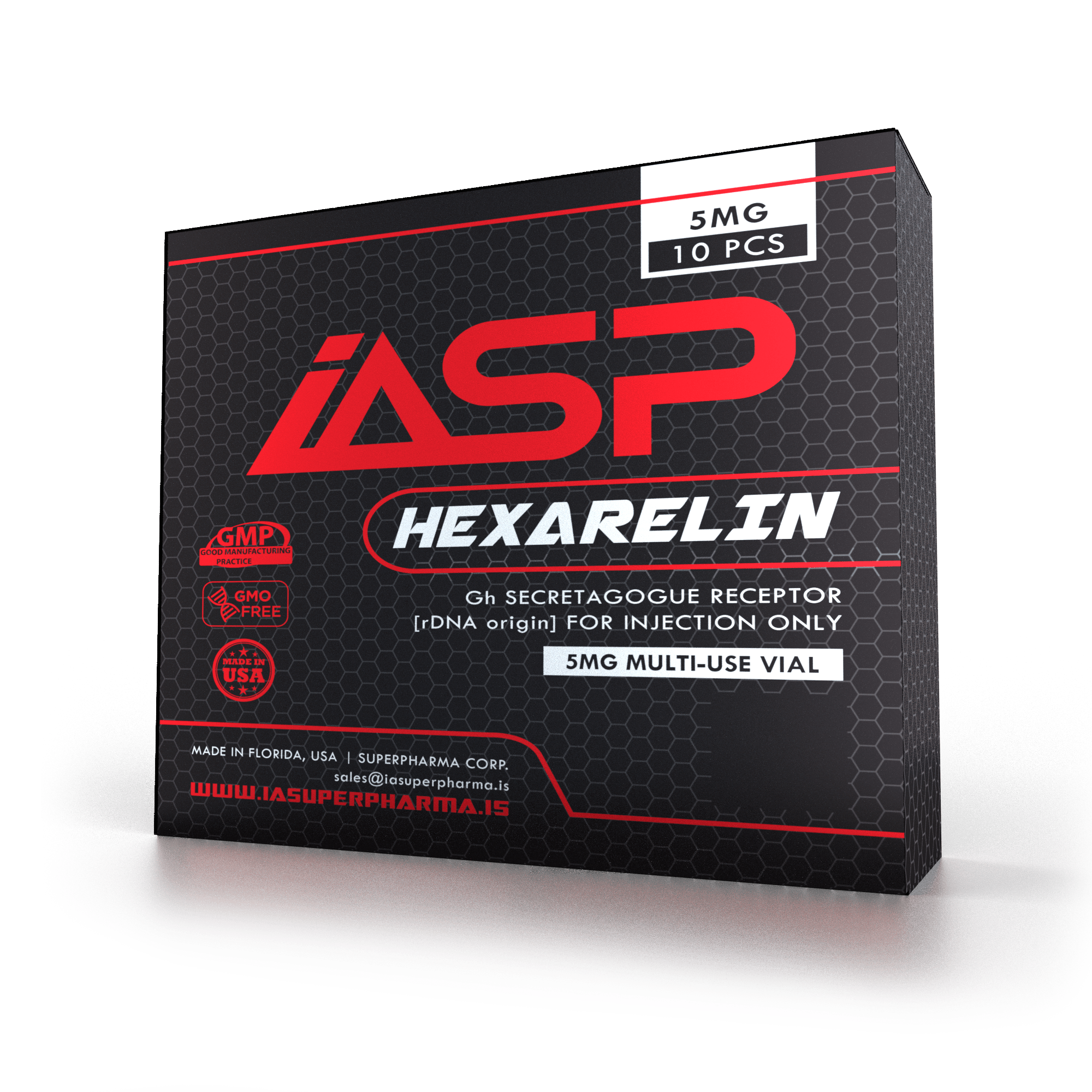This product is a box of 10 vials.
What Is Hexarelin ?
Hexarelin, also called examorelin, is a synthetic version of ghrelin and is closely related to GHRP-6. In fact, hexarelin and GHRP-6 differ from each other only slightly due to the addition of two methyl groups to GHRP-6. Hexarelin, like many ghrelin versions, works when taken by mouth or under the tongue and is highly selective. Hexarelin has been heavily researched for its effects on heart cell survival after reduced blood flow and lack of nutrients.
Sequence: His-D-Trp(2-Me)-Ala-Trp-D-Phe-Lys
Molecular Formula: C47H58N12O6
Molecular Weight: 887.059 g/mol
PubChem CID:6918297
CAS Number: 140703-51-1
Protects the Heart
Hexarelin directly affects the heart by binding to the CD36 receptor and the growth hormone secretagogue receptor (GHSR). Studies in mice suggest hexarelin protects heart cells from injury during a heart attack by binding to these receptors and preventing cells from undergoing programmed cell death. Mice treated with hexarelin showed improved heart function, more surviving heart cells, and less production of malondialdehyde, a marker of heart cell death. Interestingly, GHRP-6 was found to be slightly better than ghrelin in this study.
A study in rats looking at GHRP-6's ability to counter heart failure problems found that the peptide reduces oxidative stress in heart failure and prevents heart tissue remodeling. Remodeling is a harmful process linked to reduced heart function and serious health issues. Rats treated with GHRP-6 had major improvements in heart function. These effects are thought to come from GHRP-6 boosting phosphatase and tensin homologue (PTEN) activity while lowering protein kinase B levels. PTEN helps with cell regeneration, while protein kinase B controls cell survival.
GHRP-6 is so effective at reducing heart remodeling that it shifts nervous system activity from sympathetic stimulation (like higher heart rate and blood pressure) toward parasympathetic dominance. This improves short-term health and outcomes, reduces long-term need for medication, and likely prevents further heart remodeling from increased stress. Rats treated with GHRP-6 after a heart attack show big reductions in scar size.
Because hexarelin's way of protecting heart cells isn't limited to heart attack damage, researchers thought it could protect against other heart stresses too. Research in rats found that hexarelin improved heart function in diabetes models by changing how heart muscle cells handle calcium and potassium.
Improves Fat Measures
Dyslipidemia means an abnormal amount of fat in the blood. Interestingly, it's a standalone risk factor for diabetes, even in slim and seemingly healthy people. In fact, dyslipidemia may explain the diabetes rise in developed countries, and understanding its effects on the body is key to fighting health issues from modern diets. Rat studies show GHRP-6 can fix dyslipidemia during insulin resistance (an early diabetes step) while also lowering blood sugar and insulin resistance. The peptide may provide an alternative to current lipid drugs for severe dyslipidemia.
Protects Muscle
Hexarelin doesn't just protect heart muscle. Studies in rat models of cachexia (extreme weight loss from illness or chemotherapy) show GHRP-6 protects muscle cells by controlling calcium flow and fixing mitochondrial problems. Mitochondria are cells' power sources. Without them, cells can't make needed energy and will die.
Chemotherapy often disrupts calcium regulation. This is a main reason muscle and lean body mass suffer during cancer treatment. Rat research shows GHRP-6 counters chemotherapy's calcium changes.
Curious about Hexarelin?
Join our Facebook group to engage directly with thousands of others who use this product, and follow our Facebook/IG pages for hot updates and product announcements!


